CWDM and DWDM Network Solutions
With the rapid development of data services, the bandwidth requirements of transmission networks are increasing.
In view of the fact that metropolitan area networks have many characteristics such as transmission distance and variety of services that are different from the backbone network, wavelength division multiplexing is very suitable for optical fiber expansion.
Wavelength division multiplexing (WDM) system is designed for high capacity communications. In fiber optic commuications, wavelength-division multiplexing (WDM) is a technology which multiplexes a number of optical carrier signals onto a single optical fiber by using different wavelengths (i.e., colors) of laser light. This technique enables bidirectional communications over one strand of fiber, as well as multiplication of capacity.
.jpg)
A WDM system uses a multiplexer at the transmitter to join the several signals together, and a demultiplexer at the receiver to split them apart. With the right type of fiber it is possible to have a device that does both simultaneously, and can function as an optical add-drop multiplexer.
What do Multiplexer (MUX) and Demultiplexer (DEMUX) mean?
A Multiplexer (MUX) is a device that selects one of several analog or digital input signals and forwards the selected input into a single line. Multiplexers are mainly used to increase the amount of data that can be sent over the network within a certain amount of time and bandwidth.
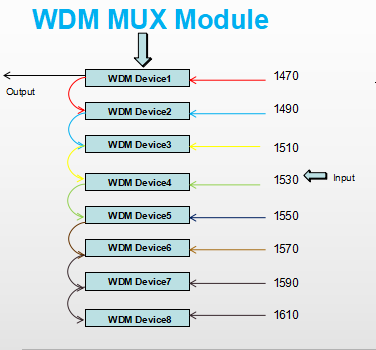
Conversely, a Demultiplexer (DEMUX) is a device taking a single input signal and selecting one of many data-output-lines, which is connected to the single input.
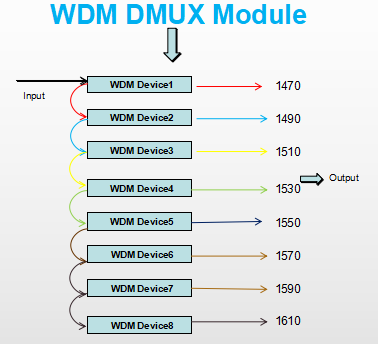
A multiplexer is often used with a complementary demultiplexer on the receiving end.

CWDM/DWDM MUX DEMUX
WDM systems are divided into two different wavelength patterns, coarse wavelength division multiplexing (CWDM) and dense wavelength division multiplexing (DWDM). Coarse WDM provides up to 16 channels across multiple transmission windows of silica fibers. Dense wavelength division multiplexing (DWDM) uses the C-Band (1530 nm-1565 nm) transmission window but with denser channel spacing.
CWDM MUX/DEMUX Solution
Here We list several types of the CWDM MUX/DEMUX Solution. There are mainly duplex transmission, simplex uni-directional transmission and simplex Bi-directional transmission.
Figure 1
Dual Fiber CWDM Duplex MUX & DEMUX
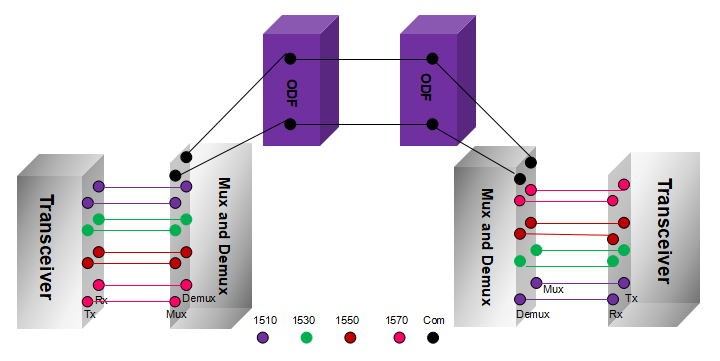
4 Channels Duplex Transmission CWDM MUX & DEMUX
Figure 2
Single Fiber CWDM MUX DEMUX
CWDM MUX must be used with DEMUX on the other side
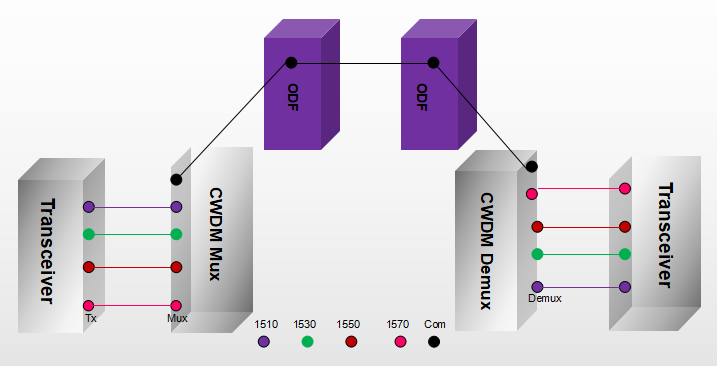
4 Channels Simplex Uni-directional Transmission CWDM MUX or DEMUX
Figure 3
Single Fiber CWDM MUX DEMUX
Simplex Bi-directional Transmission should be used in pairs, MUX / DEMUX port specific wavelength must be opposite CWDM
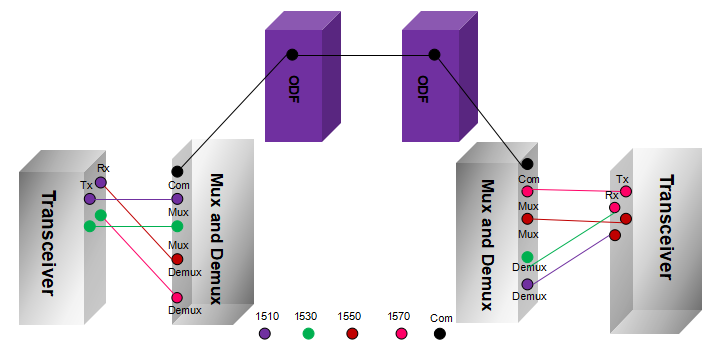
4 Channels Simplex Bi-directional Transmission CWDM MUX & DEMUX
DWDM MUX/DEMUX Solution
The DWDM MUX/DEMUX is mainly dual fiber transmission, which show as follow pictures.
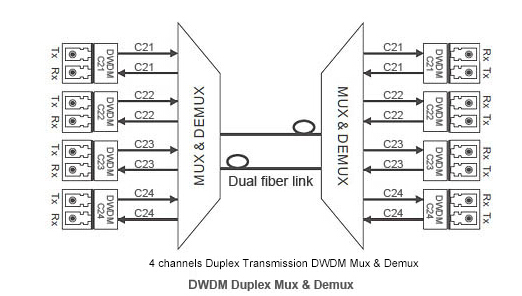
MUX and DEMUX can be used in several fields, such as communication system, computer memory, telephone network, etc. Using WDM can enhance the effectiveness of bandwidth in fiber optic communications. This technique enables better fiber utilization, increasing fiber capacity by a factor of 16-96, building effective optical networks.







